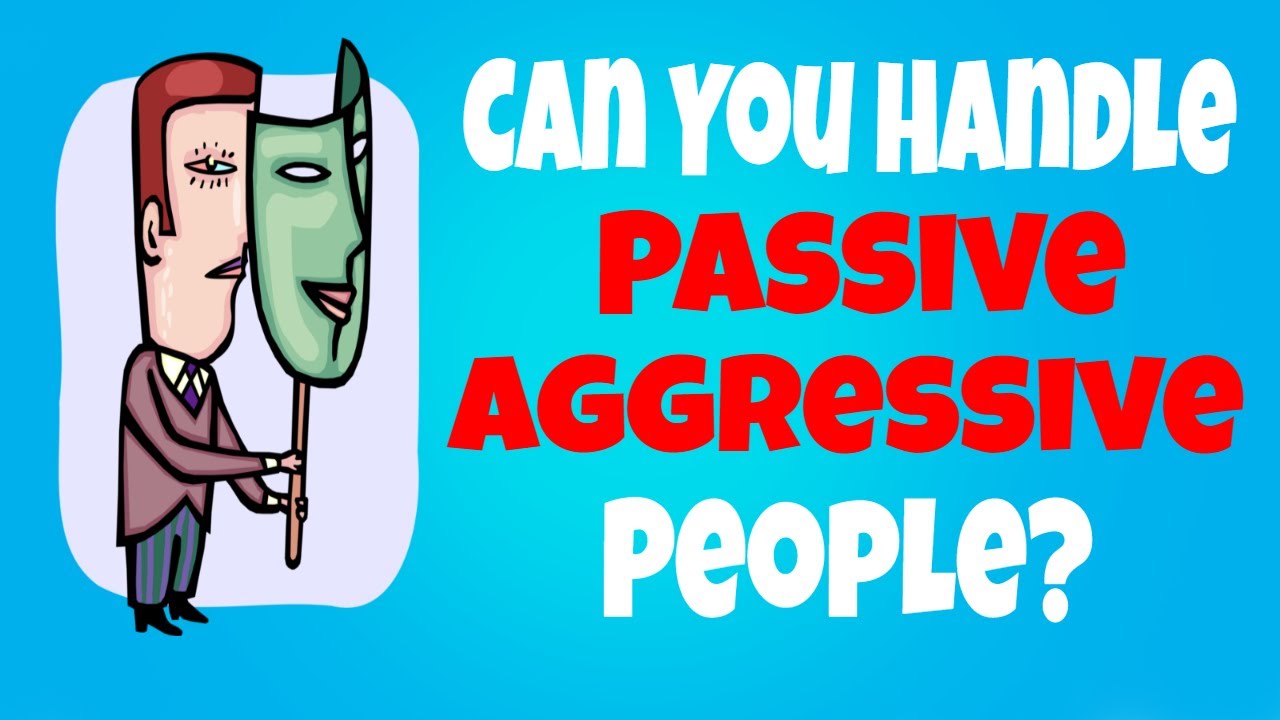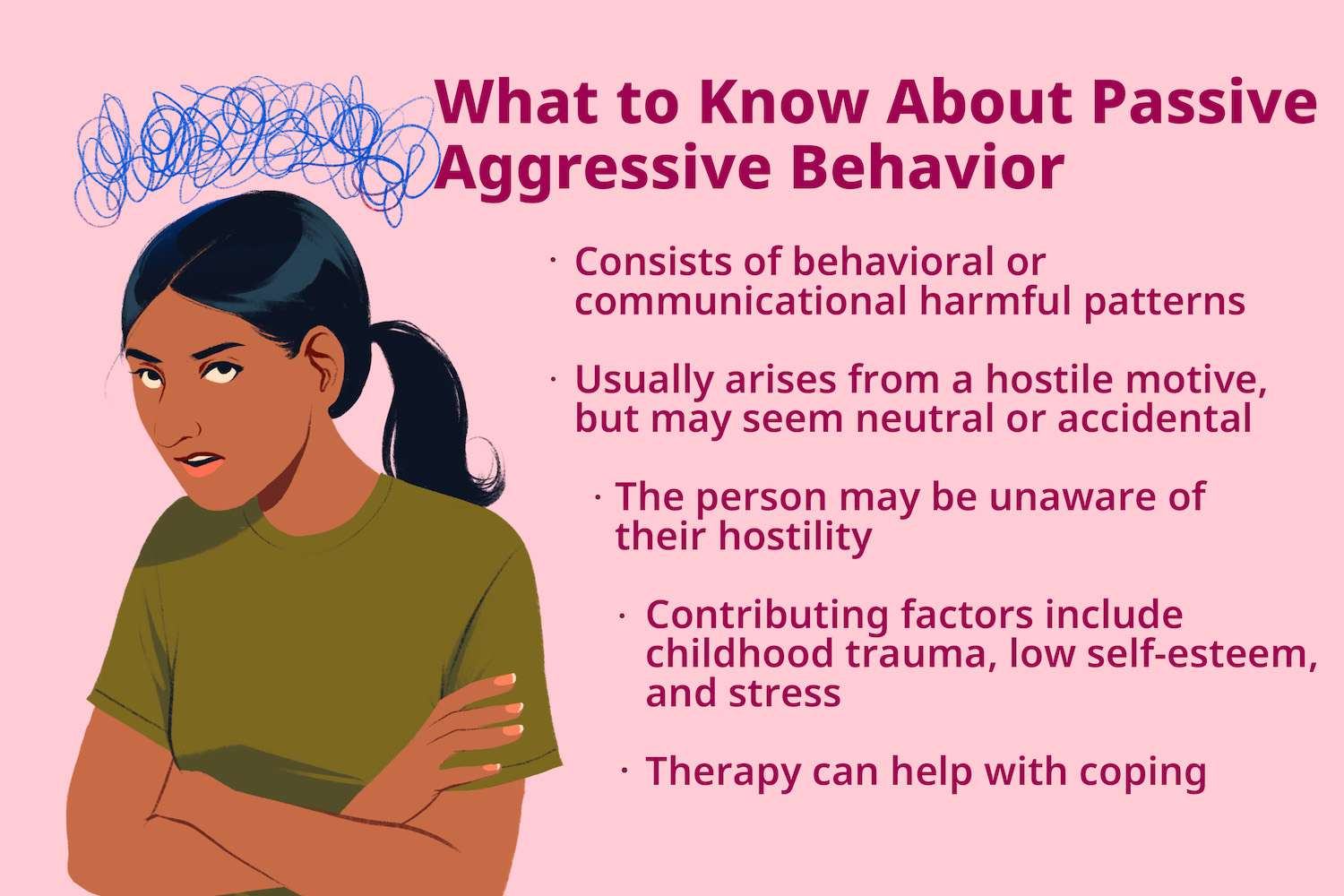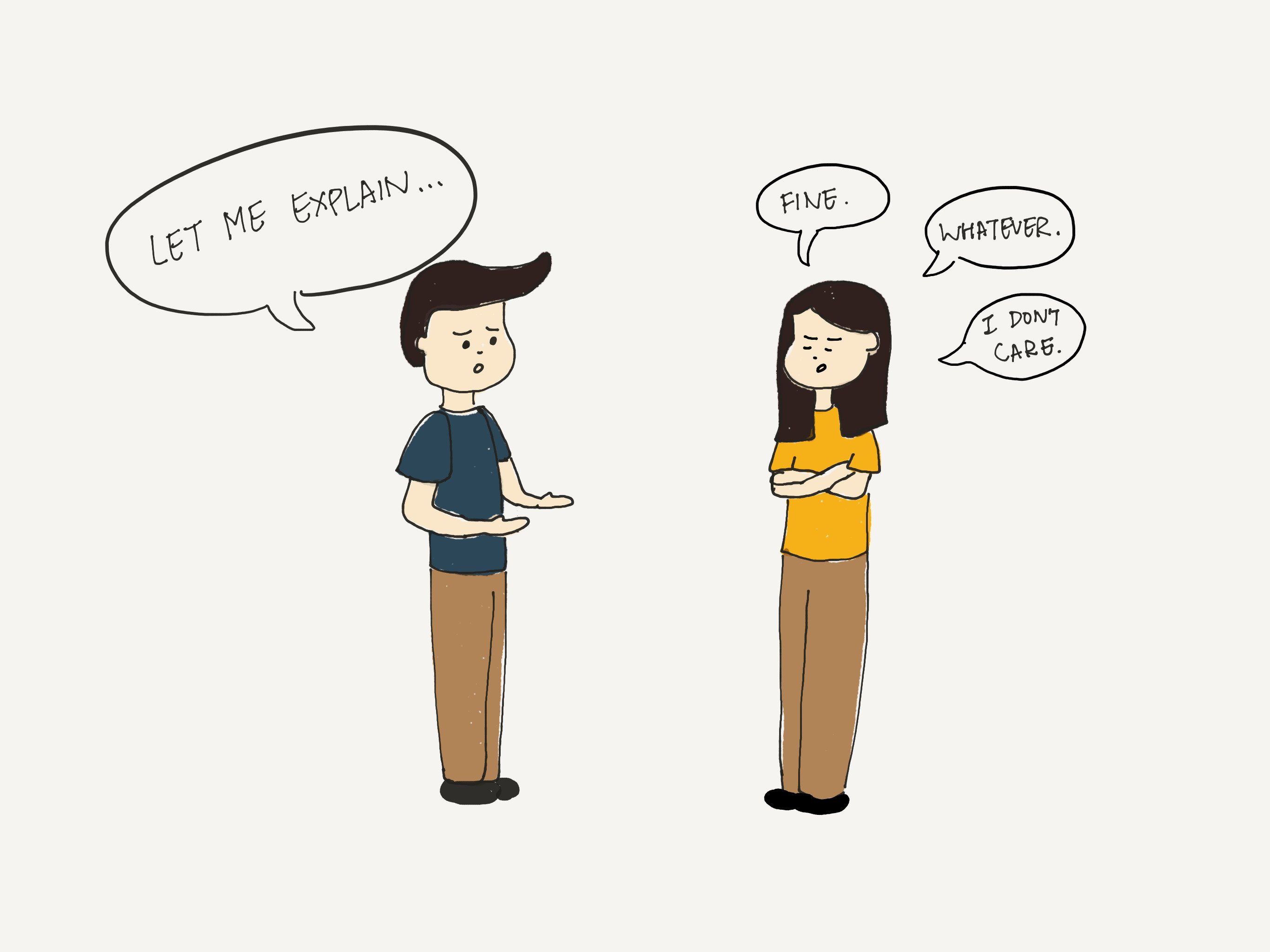How To Respond To Passive Aggressiveness? Beyond The Silence
Discover effective strategies on how to respond to passive aggressiveness. Learn communication techniques and practical tips to navigate and defuse passive-aggressive situations with confidence and assertiveness.
Author:Paolo ReynaReviewer:James PierceDec 05, 20235.6K Shares75.8K Views

Learn effective strategies on how to respond to passive aggressiveness. Navigating passive aggressiveness in interpersonal communication can be challenging, yet mastering effective responses is key to maintaining healthy relationships.
Whether encountered in the workplace, social circles, or personal connections, understanding how to respond to passive aggressiveness is a valuable skill. In this guide, we will delve into insightful strategies and practical tips to help you handle passive-aggressive behavior with grace and assertiveness.
What Is Passive Aggression?
Passive aggression is a form of indirect expression of hostility or resentment. It involves subtle, often covert, actions or behaviors aimed at conveying negative feelings without openly confronting the source of discontent.
Instead of expressing anger or frustration directly, passive-aggressive individuals may employ tactics such as sarcasm, procrastination, sullen silence, or backhanded compliments. This behavior creates a challenging dynamic, as the true feelings or intentions are often hidden beneath a veneer of superficial cooperation.
Passive aggression can manifest in various contexts, from personal relationships to the workplace, making it crucial to recognize these subtle signs for effective communication and conflict resolution. Understanding passive aggression enables individuals to address underlying issues and promote healthier interactions.
How To Spot Passive Aggressive Behavior?
Passive-aggressive behavior can be elusive, making it challenging to identify. Understanding the subtle signs is crucial for maintaining healthy relationships and fostering open communication. Here's a guide to help you spot passive-aggressive behavior.
Indirect Communication - The Art Of Veiled Messages
One key indicator of passive aggression is indirect communication. Individuals may express their displeasure through subtle hints, sarcasm, or veiled comments instead of addressing issues directly. Pay attention to non-verbal cues and carefully crafted phrases that carry an underlying negative message.
Avoidance And Procrastination - Delayed Discontent
Passive-aggressive individuals often avoid direct confrontation by procrastinating or intentionally delaying tasks. This behavior allows them to express dissatisfaction without openly acknowledging it. Recognize patterns of delay and evasion, especially in response to requests or responsibilities.
Backhanded Compliments - A Trojan Horse Of Criticism
Another hallmark of passive-aggressive behavior is the use of backhanded compliments. These seemingly positive remarks carry a hidden layer of criticism or sarcasm. If you find yourself receiving compliments that leave you feeling uneasy, it's essential to examine the underlying tone.
Sullen Silence - The Silent Weapon Of Disapproval
Silence can be a powerful tool for passive-aggressive individuals. Instead of expressing discontent verbally, they may choose to withdraw, becoming uncommunicative or giving the silent treatment. This non-verbal form of protest communicates displeasure without directly addressing the issue.
Sabotaging Success - Undermining Efforts Unseen
Passive aggression can manifest in subtle ways, such as sabotaging the success of others. This might involve withholding information, conveniently forgetting to share critical details, or subtly undermining someone's efforts. Be vigilant for actions that hinder progress without overt confrontation.
Masked Hostility - Smiling Faces, Hidden Resentment
Some individuals adept at passive-aggressive behavior maintain a façade of friendliness while harboring resentment underneath. The contrast between their pleasant demeanor and subtle acts of sabotage can be disconcerting. Look for inconsistencies between words and actions.
Passive Resistance - The Quiet Rebellion
Passive resistance is a nuanced form of passive-aggressive behavior where individuals comply with requests on the surface but do so with intentional inefficiency or a lack of enthusiasm. Recognizing this subtle form of resistance is crucial to understanding the underlying dissatisfaction and addressing it head-on.
Feigned Helplessness - Playing The Victim Card
Some passive-aggressive individuals adopt a role of helplessness to manipulate situations. By portraying themselves as victims, they garner sympathy and deflect responsibility for their actions. Keep an eye out for patterns of learned helplessness as a tactic to avoid accountability.
Guilt Trips - Emotional Manipulation In Disguise
Using guilt as a weapon, passive-aggressive individuals may employ guilt trips to make others feel responsible for their perceived unhappiness. Statements like, "I guess I'm just a burden" or "I never ask for anything" can be indicators of manipulative behavior aimed at gaining sympathy and control.
Conditional Cooperation - Setting Unspoken Rules
Passive-aggressive individuals may cooperate, but their cooperation often comes with unspoken conditions. They may agree to participate in a task or activity but subtly impose restrictions or create obstacles along the way. Recognizing these covert conditions is essential for maintaining transparency in interactions.
7 Ways To Neutralize Passive Aggression
Passive-aggressive behavior can be a pervasive and challenging aspect of interpersonal dynamics, often leaving individuals frustrated and uncertain about how to respond to passive-aggressive comments. Neutralizing passive aggression involves a combination of awareness, assertiveness, and empathy.
Here are seven effective strategies to foster healthy communication and address passive-aggressive behavior proactively.
Direct Communication - Confronting The Issue Head-On
One of the most powerful ways to neutralize passive aggression is through direct communication. Address the issue openly and assertively, expressing your feelings and concerns. Use "I" statements to avoid sounding accusatory, focusing on the specific behavior rather than making generalizations. For example, instead of saying, "You always do this," you might say, "I feel upset when I perceive a lack of openness in our communication."
Direct communication helps bring the issue to the forefront, encouraging transparency and providing an opportunity for the passive-aggressive individual to express their feelings or concerns as well.
Set Clear Boundaries - Establishing Expectations
Establishing clear boundaries is crucial in dealing with passive-aggressive behavior. Clearly communicate your expectations and the consequences of crossing those boundaries. This proactive approach empowers individuals to navigate interactions with a shared understanding of acceptable behavior, reducing the likelihood of passive-aggressive tactics.
When setting boundaries, be assertive but also open to negotiation. Clearly articulate what behaviors are unacceptable and the impact they have on the relationship. This clarity can act as a deterrent to passive-aggressive tendencies.
Practice Active Listening - Understanding The Underlying Issues
Passive-aggressive behavior often stems from unaddressed underlying issues. Practice active listening to understand the emotions and concerns behind the passive-aggressive actions. Reflect back what you've heard to ensure a mutual understanding.
Active listening involves giving the person your full attention, avoiding interrupting, and asking clarifying questions. By demonstrating genuine interest in their perspective, you create a space for open dialogue and may uncover the root causes of their passive-aggressive behavior.
Stay Calm And Composed - Managing Emotional Responses
Responding to passive aggression with anger or frustration can escalate the situation. It's crucial to stay calm and composed when addressing passive-aggressive behavior. Take a moment to assess your emotions before responding, and choose a measured and assertive approach.
By maintaining emotional composure, you demonstrate resilience and control, which can be disarming to the passive-aggressive individual. It also sets a positive tone for the conversation, increasing the likelihood of a constructive resolution.
Offer Constructive Feedback - Encouraging Positive Change
While addressing passive-aggressive behavior, provide constructive feedback focused on specific actions and their impact. Instead of criticizing the person, focus on the behavior that needs adjustment. For example, say, "When you don't express your concerns directly, it makes it difficult for me to understand your perspective. I would appreciate more open communication."
Constructive feedback encourages self-reflection and promotes positive change. It highlights the specific behaviors that need modification, making it easier for the individual to understand the impact of their actions and work towards improvement.
Seek Mediation - Involving A Neutral Third Party
In situations where direct communication proves challenging or ineffective, seeking mediation can be beneficial. A neutral third party, such as a mediator or counselor, can provide an objective perspective and facilitate a constructive conversation.
Mediation creates a structured environment for communication, allowing both parties to express their feelings and concerns. The mediator can guide the conversation towards resolution, helping individuals find common ground and develop strategies for more effective communication.
Lead By Example - Modeling Healthy Communication
Ultimately, neutralizing passive aggression involves modeling the behavior you wish to see. Demonstrate healthy communication by expressing yourself assertively, actively listening, and addressing conflicts directly. Leading by example sets a standard for open and respectful communication within the relationship or group.
Consistently modeling healthy communication encourages others to follow suit. It creates an environment where passive-aggressive behavior is less likely to thrive, fostering a culture of transparency, understanding, and cooperation.
Dos And Don'ts - Dealing With Passive Aggression
Dos Of Dealing With Passive Aggression
- When facing passive-aggressive behavior, adopting certain dos can pave the way for healthier interactions.
- Embrace direct communication by addressing the issue openly and assertively, using "I" statements to express feelings without sounding accusatory.
- Set clear boundaries, clearly communicating expectations and consequences to discourage passive-aggressive tendencies.
- Engage in active listening to understand the underlying issues, demonstrating empathy in your responses.
These dos create a foundation for transparent communication, fostering understanding and conflict resolution.
Don'ts Of Dealing With Passive Aggression
- Avoiding certain behaviors is equally crucial when dealing with passive aggression.
- Refrain from responding with anger or frustration, as this can escalate tensions and hinder constructive dialogue.
- Maintain emotional composure to create a conducive environment for resolution. Steer clear of engaging in passive-aggressive behavior yourself, as this perpetuates a cycle of negativity.
- Lastly, don't ignore or dismiss the issue; addressing concerns promptly is essential to prevent the persistence of passive-aggressive dynamics.
By incorporating these dos and avoiding the don'ts, individuals can navigate passive-aggressive behavior effectively, fostering positive communication and building stronger connections in various aspects of life.
How To Tell If You Are Being Passive-Aggressive?
Recognizing if you are exhibiting passive-aggressive behavior is crucial for personal growth and healthier relationships. One telltale sign is indirect communication – expressing dissatisfaction through subtle hints, sarcasm, or veiled comments instead of addressing issues directly.
If you find yourself procrastinating, delaying tasks intentionally, or avoiding direct confrontation, you might be engaging in passive-aggressive tactics. Backhanded compliments, a Trojan horse of criticism, are another indicator. Reflect on whether you use seemingly positive remarks that carry a hidden layer of negativity.
Silent resistance, where you withdraw or give the silent treatment instead of expressing discontent, is a common passive-aggressive tactic. If you notice a pattern of sabotaging success, undermining efforts without overt confrontation, it's essential for self-reflection. Guilt trips and playing the victim can also be signs, using emotional manipulation to garner sympathy or deflect responsibility.
Recognizing these behaviors and taking responsibility for them is the first step toward cultivating healthier communication and fostering personal growth. By acknowledging and addressing your passive-aggressive tendencies, you open the door to more transparent and authentic interactions with those around you.
When To Seek Professional Help?
If you find yourself struggling with persistent passive-aggressive behavior, seeking professional help can be a valuable step towards personal growth and improved relationships.
One indication that professional intervention may be beneficial is when your passive-aggressive tendencies consistently disrupt your personal or professional life. If friends, family, or colleagues express frustration or difficulty in dealing with your communication style, it could be a signal to consider professional assistance.
Therapists or counselors can provide an objective perspective, helping you understand the root causes of your passive-aggressive behavior. They offer guidance in developing healthier communication patterns, addressing underlying issues, and building effective conflict resolution skills. Seeking professional help is especially important if passive-aggressive tendencies are linked to deeper emotional issues or past traumas.
Additionally, if you find it challenging to break the cycle of passive-aggressive behavior on your own, a mental health professional can provide the support and tools necessary for positive change. Taking the proactive step of seeking professional help demonstrates a commitment to personal development and can lead to more fulfilling and authentic connections with others.
How To Respond To Passive Aggressiveness - FAQs
How Can One Address Passive Aggressiveness In The Workplace?
Consider discussing the behavior privately with the individual, seeking mediation if necessary, and communicating expectations clearly.
Is It Advisable To Confront Passive Aggressiveness Directly Or Indirectly?
Direct communication is often more effective, but the approach may vary based on the specific situation and relationship.
What Are Common Signs Of Passive Aggressiveness In Communication?
Signs include sarcasm, backhanded compliments, and avoidance of direct confrontation.
How Can I Stay Calm When Faced With Passive-aggressive Behavior?
Practice mindfulness techniques, take deep breaths, and focus on responding rationally rather than emotionally.
Can Seeking Professional Guidance Be Beneficial In Handling Passive Aggressiveness?
Yes, therapists or conflict resolution experts can provide valuable insights and strategies for navigating passive-aggressive dynamics effectively.
Take Out
How to respond to passive aggressiveness is pivotal for fostering healthy communication and maintaining strong relationships. Responding to passive aggressiveness requires a delicate balance of assertiveness and understanding. By implementing the strategies discussed in this guide, you can foster open communication, diffuse tension, and build stronger connections with those around you.
Remember that effective responses involve not only addressing the behavior but also creating an environment where open and honest communication can thrive. As you navigate the complexities of interpersonal dynamics, may these insights empower you to respond to passive aggressiveness with confidence and resilience.

Paolo Reyna
Author

James Pierce
Reviewer
Latest Articles
Popular Articles

